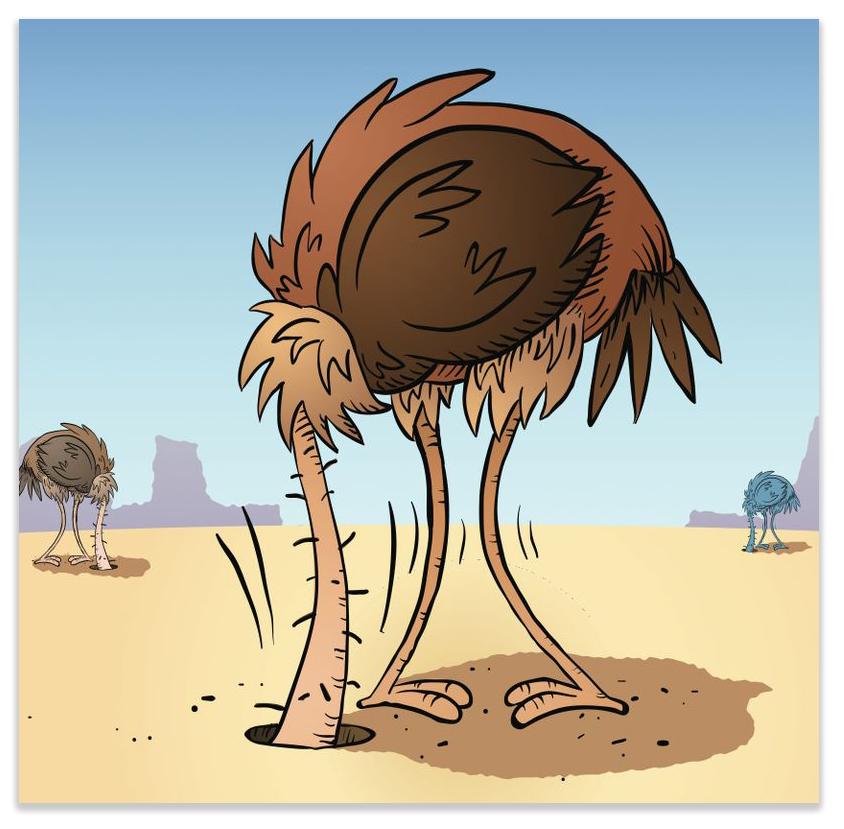We post news and comment on federal criminal justice issues, focused primarily on trial and post-conviction matters, legislative initiatives, and sentencing issues.
BURY YOUR HEAD IN A COCKTAIL NAPKIN
A 1st Circuit insider-trading decision last Friday provided some head-shaking at the way the defendants passed the stock tip between themselves, and an interesting consideration of the “ostrich instruction.”
 Bob Bray was a contractor and real estate developer (think “Bob the Builder”). He was also an avid golfer, and became drinking and dining buddies with John O’Neill, a bank mergers-and-acquisitions executive. Over the years, they tipped back a lot of cold ones and ate plenty of burgers. Bob became a family friend, and helped John’s son land a few summer jobs.
Bob Bray was a contractor and real estate developer (think “Bob the Builder”). He was also an avid golfer, and became drinking and dining buddies with John O’Neill, a bank mergers-and-acquisitions executive. Over the years, they tipped back a lot of cold ones and ate plenty of burgers. Bob became a family friend, and helped John’s son land a few summer jobs.
From time to time, Bob would ask John for stock tips, and John would suggest certain bank stocks, based on public information. No problem there. But one day in 2010, Bob told John he needed a big financial score so he could afford a large real estate project.
John replied that he knew of several good bank investments, but while he talked, he wrote the word “Wainwright” on a cocktail napkin and slid it across the table. John knew from work that Wainwright was a takeover target, and he had been tasked to do “due diligence” on the acquisition. He also knew that the information was confidential, and that he was duty-bound to keep it that way.
 Bob the Builder sold everything he had, and as quickly as he could, bought thousands of shares of Wainwright Bank, a local institution. Sure enough, a few weeks later, a big bank announced it was gobbling up little Wainwright, and Bob doubled his money.
Bob the Builder sold everything he had, and as quickly as he could, bought thousands of shares of Wainwright Bank, a local institution. Sure enough, a few weeks later, a big bank announced it was gobbling up little Wainwright, and Bob doubled his money.
Bob was a “go big or go home” kind of guy, which means that his purchase of all of that stock left a really big blip in the trading history. Pretty soon, private regulators started asking questions, then the SEC, and finally the U.S. Attorney.
Bob and John were convicted of insider trading. Last week, the 1st Circuit upheld the conviction.
Much of the appellate decision discusses issues which are interesting enough, but not what we’re writing about here. We want to focus on Bob’s complaint that the district court gave the jury a flawed “conscious avoidance” instruction.
The doctrine of “conscious avoidance” (also called “willful blindness”) is a judge-made doctrine that expands the definition of knowledge to a case where a defendant is found to have willfully closed his eyes to the high probability a fact exists. While the doctrine originated in the context of drug trafficking cases, it has since been expanded to a wide array of prosecutions and is increasingly used in the white-collar cases.
 The jury instruction – often called the “ostrich instruction” because the defendant has figuratively buried his head in the sand, benefits the government. It’s an instruction that often is requested where the government’s evidence of actual knowledge is pretty slim. Defense attorneys complain (with some justification) that “the instruction invites the jury to convict based on evidence of mere negligence or recklessness.”
The jury instruction – often called the “ostrich instruction” because the defendant has figuratively buried his head in the sand, benefits the government. It’s an instruction that often is requested where the government’s evidence of actual knowledge is pretty slim. Defense attorneys complain (with some justification) that “the instruction invites the jury to convict based on evidence of mere negligence or recklessness.”
One of the issues in Bob’s case was whether he knew that John had a duty to keep the Wainwright information confidential. Bob argued on appeal that he should get a new trial because the district court wrongly instructed the jury on the mens rea element of his offense. The district court erroneously told the jury that it could convict Bob of securities fraud so long as it found that he “knew or . . . should have known” that O’Neill had breached a duty of confidentiality by giving him the Wainwright tip. Bray also complained that the district court’s instructions erred by equating the concept of “willful blindness” with negligence.
The 1st Circuit agreed that “the district court clearly erred in defining the ‘willful blindness’ standard.” Willful blindness has “an appropriately limited scope that surpasses recklessness and negligence,” the Circuit said, “and expressly contrasting willful blindness with ‘a negligent defendant… who should have known of a similar risk but, in fact, did not” was wrong. The Court held:
A willful blindness instruction is meant to inform jurors that they may impose criminal liability on people who, recognizing the likelihood of wrongdoing, nonetheless consciously refuse to take basic investigatory steps. The instruction in this case, however, mistakenly suggested that the jury could find “consciously and deliberately avoided learning” about the violation.
Unfortunately for Bob, his attorney did not object to the instruction at trial, so the review on appeal was under the FRCrimP 52(b) “plain error” standard. The fourth prong of “plain error” is whether the mistake “distort[ed] the fairness or integrity of lower court proceedings in some extreme way.” Here, the Court said, it did not, because the evidence was ample that Bob knew the moment the napkin was wordlessly slid across the table that he was getting inside information that John had no right to provide. In the law business, that’s called “actual knowledge.”
Bob scored over $300,000 on the sale of his Wainwright stock. And then, he lost big.
United State v. Bray, Case No. 16-1579 (1st Cir., Feb. 24, 2017)
– Thomas L. Root

